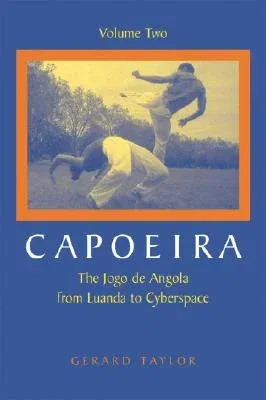Gerard Taylor
(Author)Capoeira: The Jogo de Angola from Luanda to CyberspacePaperback, 24 April 2007

Qty
1
Turbo
Ships in 2 - 3 days
In Stock
Free Delivery
Cash on Delivery
15 Days
Free Returns
Secure Checkout

Part of Series
Capoeira
Print Length
531 pages
Language
English
Publisher
Blue Snake Books
Date Published
24 Apr 2007
ISBN-10
1583941835
ISBN-13
9781583941836
Description
Product Details
Author:
Book Format:
Paperback
Country of Origin:
US
Date Published:
24 April 2007
Dimensions:
22.61 x
15.39 x
3.43 cm
ISBN-10:
1583941835
ISBN-13:
9781583941836
Language:
English
Location:
Berkeley, CA
Pages:
531
Publisher:
Series:
Weight:
875.43 gm